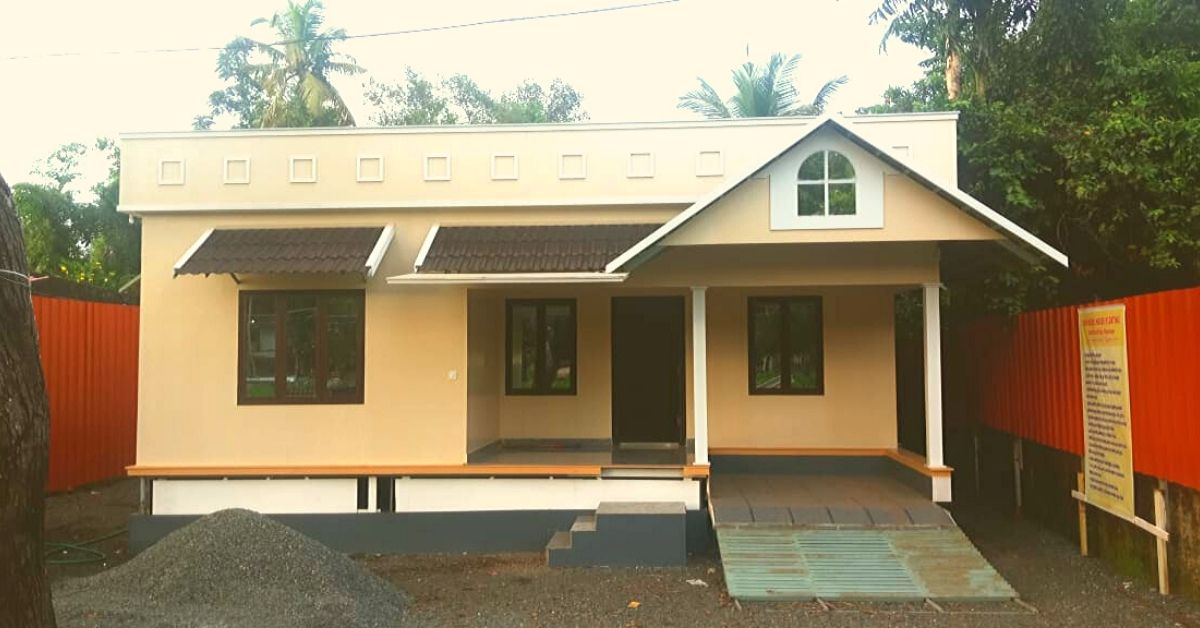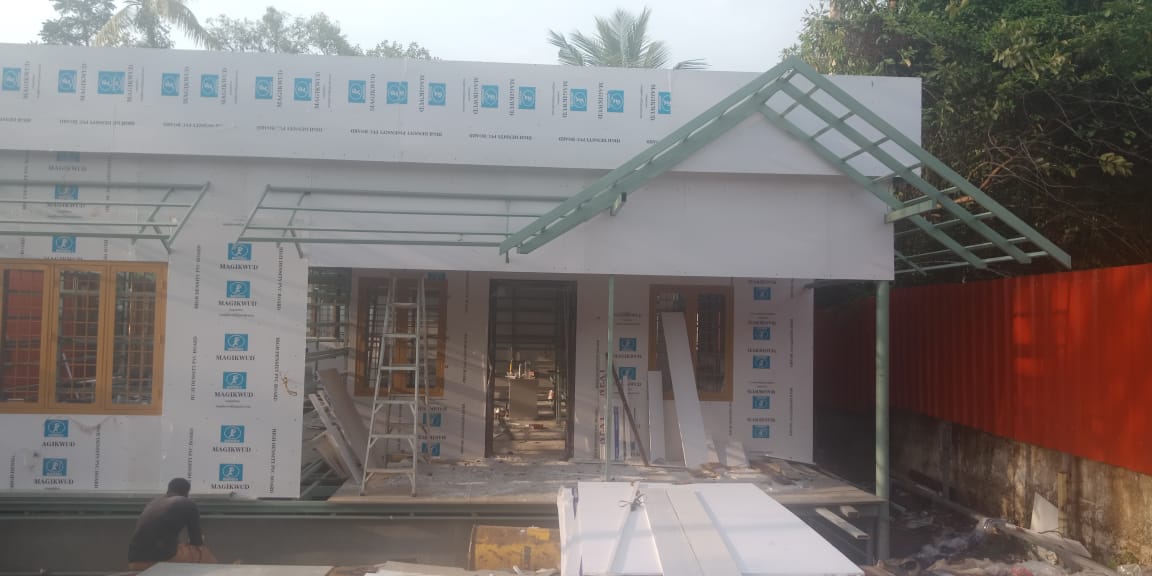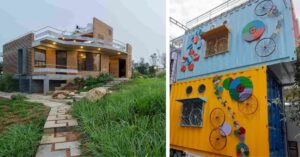Kerala Man Designs Affordable ‘Floating House’ That Can Withstand Floods
Built without using stones, bricks or cement, Gopalalrishan's 1300 sqft house is designed to float atop flood waters when the water level rises! #Innovation #Kerala

Torrential rains, floods and landslides batter certain parts of Kerala every monsoon, while residents, who have spent hefty sums building their homes, helplessly witness the severe damages.
In anticipation of these extreme weather conditions, many have resorted to innovative design structures or construction methods to minimise the damage. P Gopalakrishnan Achari, a resident of Vazhappilly, is one such person.
Support People With Disability: A collection of great products created by artisans with disabilities.
When the water level rises during floods, his design allows the house to literally float atop the floodwaters. Interestingly, it was not originally meant to be a flood-resistant house.
Speaking to The Better India, Achari explains, “For the past few years, the construction sector in Kerala has been facing a tough time in procuring rock, baby metal and sand. So, there was a need to look for other materials that are cost-effective and eco-friendly. First, I constructed a model house using steel pipe and multi-wood sheets. Taking me nearly five years to build the house, I built it in 2017. But next year, the floods hit Kerala. Then I redesigned it to ensure the house is equipped for a possible flood situation.”

Achari mentions that air tanks installed in the foundation of the house are what help the house rise. When the water level rises, so will the structure.
“To avoid the floating house from being swept away by the floodwaters, I have placed four steel pistons in four corners through the walls. These pistons are not visible from outside or inside the house and are entrenched 25 feet into the earth. The house stands on the inner rods of these pistons and doesn’t touch the earth. During floods, the house will move up along with the air tank with the support of the piston. When the water recedes, it will automatically come back to the normal level. The house will not move an inch on to the sides,” says Achari.
In this particular model, the piston extends up to 15 feet above the earth, and therefore the house can safely move up to 10 feet. The height of the pistons can be adjusted to any level, but the strength and length of the piston should be increased accordingly.
“I haven’t used mud, rocks, tiles, cement or wood. The entire structure is made of steel (GI pipe). The walls are made of multi wood sheet on both sides. There is an air gap of 1.5 inch between these sheets which help bring down the temperature in the house,” he adds.
The basement is also covered with multi-wood sheets so that the tank will not be visible from outside. The model house is made of aluminium sheet. Any material can be used for roofing.

Cost
If a good quality GI pipe is used, the house will cost approximately Rs.1,600 per sq.ft. Achari claims that he hasn’t compromised on the quality of materials.
“It took me four months to build this 1,300 sq.ft. house. The construction demands very less labour force as skilled workers are only needed for welding, carpentry and plumbing. Four welding experts worked throughout the construction period, while four carpenters also worked for a few days, besides getting a hand in the wiring and plumbing process,” he says.
Interestingly, Achari claims that the flood-resistant houses can be constructed on any type of soil—from very loose sand to hard rock.
“I have also designed a model house which will help people living in low lying areas like Kuttanad, where water-logging and floods are part of daily life. It is an ‘extra height house,’ which again stands on many pistons,” he adds.

Recognition
After a video of his house became viral, more than 300 people have visited to learn about it. These people include architects, civil engineers and students, among others from Kerala, Karnataka and Tamil Nadu.
Also Read: Dump the AC, Use These 3 Green Cooling Solutions While Building Your Home!
“I have given detailed information to all and learnt that some people have started constructing houses using this model. I am happy that my experiment has turned helpful to people. I’m more than happy to share details to those interested,” he says.
(With inputs from Ranjith KR)
(Edited by Gayatri Mishra)
Like this story? Or have something to share? Write to us: [email protected], or connect with us on Facebook and Twitter.
This story made me
-
97
-
121
-
89
-
167
Tell Us More
We bring stories straight from the heart of India, to inspire millions and create a wave of impact. Our positive movement is growing bigger everyday, and we would love for you to join it.
Please contribute whatever you can, every little penny helps our team in bringing you more stories that support dreams and spread hope.



















